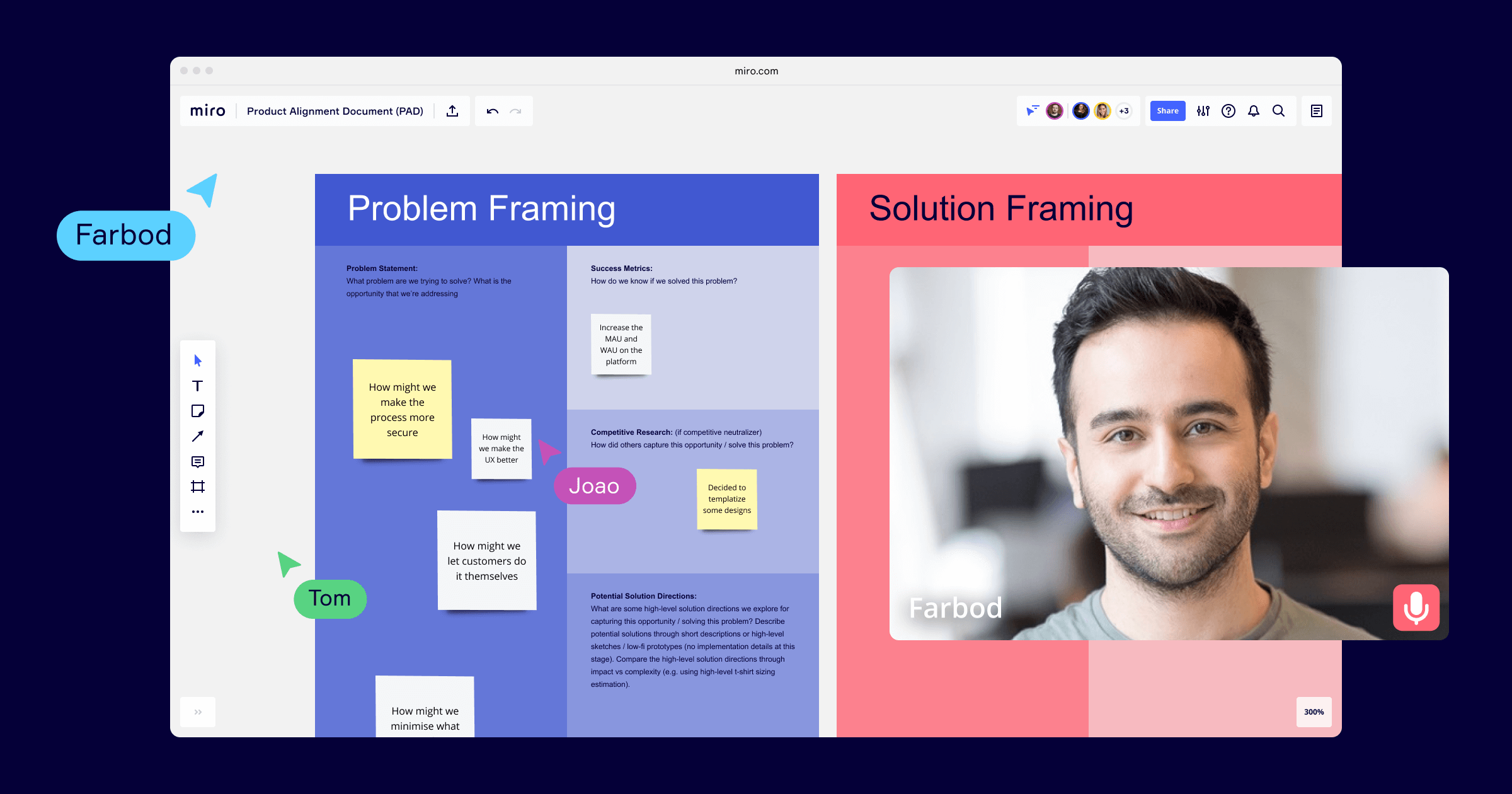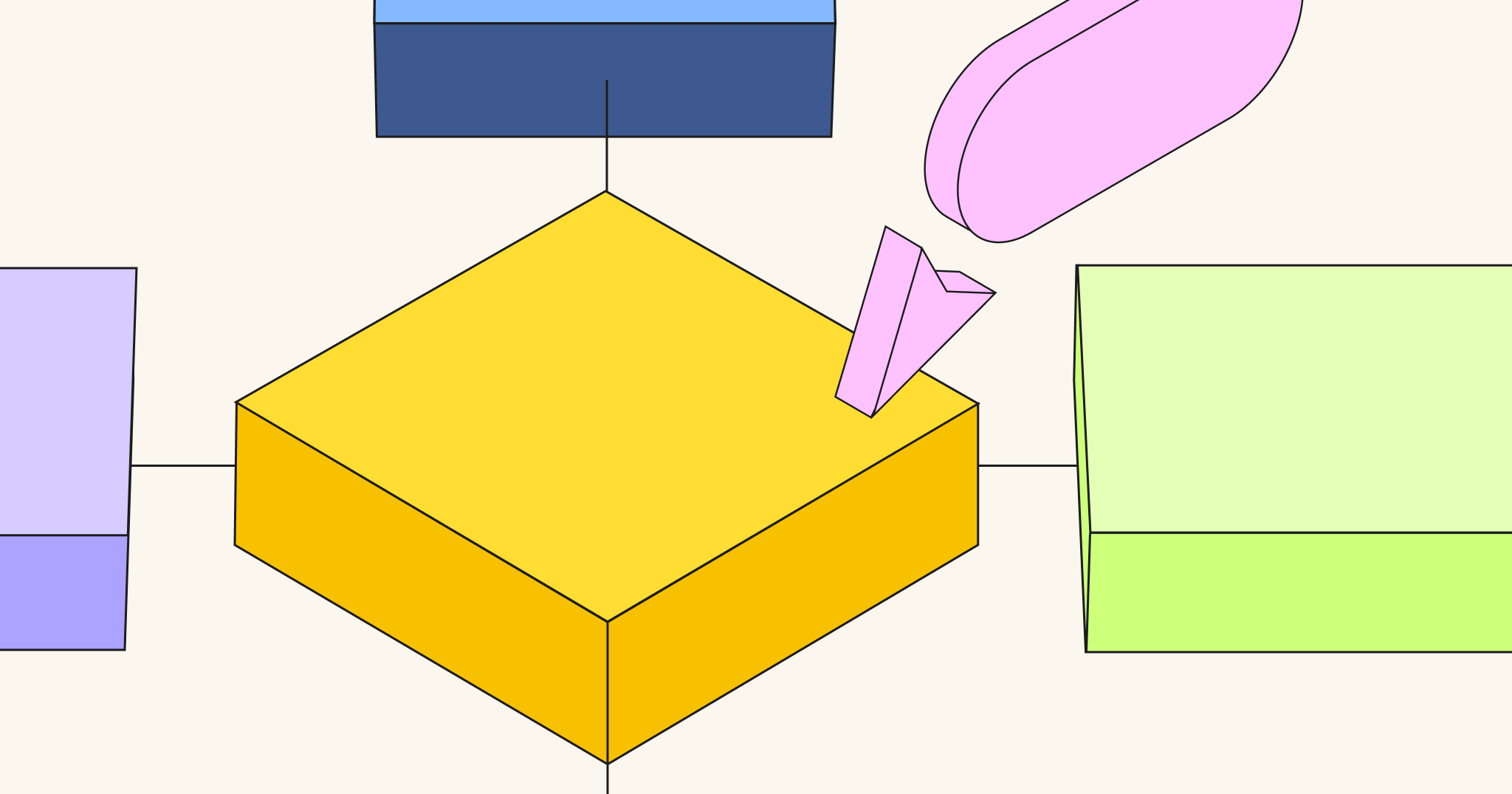Over the past year, teams around the world sought new ways to collaborate, engage, and connect. Most of us have been trying to figure out how to translate the mainstays of our company’s in-person collaboration and planning — kickoffs, offsites, training, brainstorming — into virtual events.
Underlying this process is the assumption that a virtual experience is less valuable, that it’s missing something that only in-person events can offer. But maybe that’s not true.
Miro challenged this assumption for our yearly sales kickoff (SKO) in the first quarter of 2021. SKO is a huge undertaking that demands a lot of time and planning. The goal is to bring together departments across the org, including sales, customer success, and marketing, to align cross-functionally on our go-to-market strategy for the quarter. People participate in keynotes, learn from special external guest speakers, talk about strategy, do team-building exercises — it’s huge!
With so many moving parts and the inability to connect in person this year, we weren’t sure the fun and effectiveness of SKO would hold up. But by the end of a gargantuan effort, we realized something: instead of replicating an in-person experience, we conducted the entire event in Miro to create something different. The result was not quite the same as an in-person event — but it was totally new, and incredibly exciting.
Drawing on our experience, here are three tips you can use to create your own great virtual events without sacrificing most of the elements that make in-person events so special.
Tip 1: Use virtual tools to ‘surprise and delight’
Although events like SKO are important for business strategy, they’re also important for getting everyone amped up for the year ahead. Teams work better together when they’re excited and driven.
Even weeks before the event started, we had some fun surprises to drum up excitement via our dedicated SKO Slack channel. Through Cameo, we recruited a few celebrities to help hype everyone up. When Kevin from The Office is telling you to get excited, it’s hard to argue! Sales leadership went all-in on the mountain climbing theme and got creative with videos that kept people engaged (and laughing).
Planning a large-scale event? See how Miro can help.

As part of the Awards Dinner, Corporate Bro joined us for some standup, playfully roasting teammates. To create a sense of community, we shipped everyone drinks and meal vouchers. About 175 participants used Miro to dress a digital avatar in formal wear, walk the red carpet, and chat at their “table” (Zoom breakout room) with pre-written prompts to drive the conversation.

Between events, we were able to use Miro and Zoom to participate in mental health sessions. In our “Relaxation Zone,” we meditated, went on a virtual walk together, and even worked with a posture expert to teach people how to sit ergonomically as they worked. In our feedback section of the Main Agenda Board, participants said they loved using the Relaxation Zone to unwind and connect with their teammates.
Even the Main Agenda Board was fun and creative. The theme for SKO was “Basecamp” so the board was designed with a mountain theme, where people could return to rest, recharge, and reorient after each session.

Tip 2: Provide a variety of ways for people to be heard
A live event is necessarily static. Once the speaker stands up and the audience sits down, you basically aren’t going to move until everyone transitions to the next session. But the beauty of a virtual event is that it’s entirely dynamic.
During each session of SKO, we provided a variety of ways for people to participate so they could engage comfortably and authentically. Instead of raising their hand or standing up to address the speaker, participants could simply add stickies to comment or ask questions. If the presenter saw someone add a sticky note, they could take questions as they spoke. The only difference was that participants didn’t have to work up the courage to speak in front of an audience, and the speaker could address questions without losing their train of thought.
Using Miro also allowed groups to work together to aggregate key learnings, take notes in real-time, and engage with each other. After our fireside chat with a special guest speaker, participants could add thank-you notes to the board, which the speaker could enjoy as they rolled in. On our feedback board, a lot of participants said this made the experience feel more like a personal conversation than is possible at a live event.
Ready to start planning events in Miro? Let’s talk.

After each activity, we used the board to run retros on whether people felt engaged and collect feedback that we could implement on the fly. This was a constant theme throughout SKO: doing a virtual event enabled us to be agile, compared to the arduous (and perhaps impossible) task of iterating on a live event in real-time.
Tip 3: Maximize bang for your buck
Whether it’s live or virtual, SKO is an expensive undertaking and a big investment of the entire sales teams’ time. When you’re thinking about planning a sales kickoff or any event, expense is often top of mind.
Since we didn’t have to spend money on flying people out and putting them up in hotels, we could use our budget more flexibly. We could be more creative — sending people fancy swag, bringing in a comedian, buying everyone some drinks to share, and so on. But we could also be more focused, devoting our time and budget to ensuring that every session provided substantial value and commanded everyone’s attention.

Virtual events are unique in that you really have to condense the program to keep everyone’s attention. While that can pose a challenge, it’s also a huge advantage. It forces you to craft the most high-value sessions possible in a contracted period. At SKO, that was definitely the case.
We live in the future (of events)
As teams plan for the year ahead, many of them are thinking about how and when they might return to live events. Some will do hybrid events, others will stick to virtual, while some teams hope to solely run in-person events. Regardless of what the next iteration of events looks like for you, here’s the cool part: the future is already here. With modern technology and a little creativity, format matters a whole lot less. We have the power to make any event — large or small, virtual, hybrid or in-person — highly engaging, impactful, and fun.
Beyond that, we’d challenge you to use learnings from virtual events to create better in-person events, too. Many of the things that make virtual events so desirable and efficient — allowing participants to engage with live notetaking and feedback, providing multiple ways for people to participate, creating fewer sessions with more value — are translatable to live events.
Want to explore ideas to plan your next event with Miro?
Let’s chat about your unique use case!
This post was co-authored with Matt Joyce, Head of Sales Enablement at Miro




